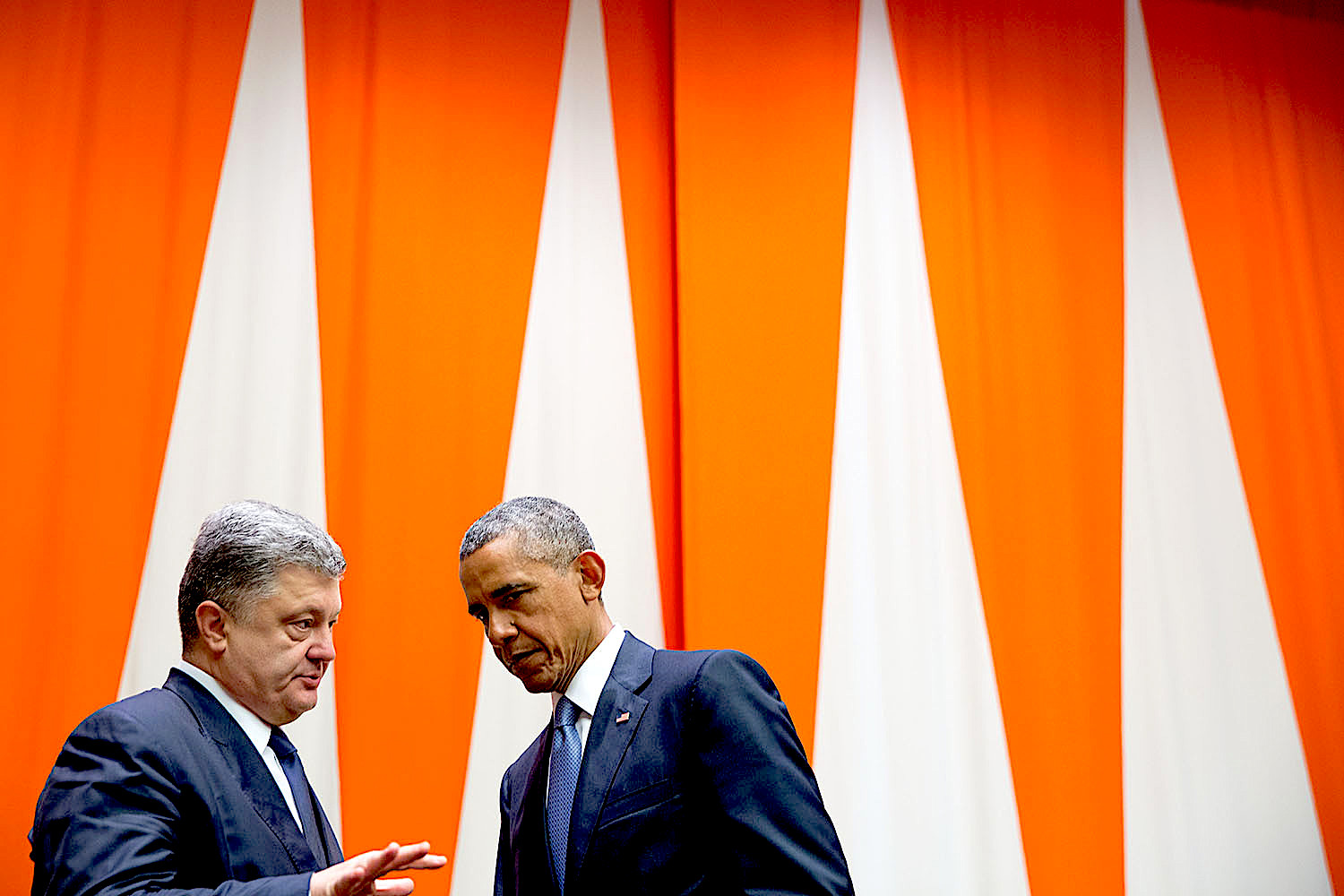The Most Powerful Demolition of Russiagate Yet
The Most Powerful Demolition of Russiagate Yet
Patrick Lawrence celebrates Jacob Seigel’s essay in Tablet magazine on the “hoax of the century.”

(Gerd Altmann auf Pixabay)
Sometime in the mid–Russiagate years, when it became clear that America was on a swoon back into the collective neuroses of the 1950s, I began to think we would have to wait for future historians to retrieve the truth buried alive in the cesspit of lies and cynical propaganda operations the deep state — and I am fine with this term — inflicted upon us in response to Donald Trump’s rise in national politics. There seemed no sorting out the godawful mess amid the incessant waves of mis– and disinformation to which our corporate media subjected us.
The task, if you were in the scribbling trade, was to write truthfully for readers, of course, but also to contribute, however modestly, to a record that tore a hole in mainstream media’s façade so that later historians looking back on our time could peer through it to see things as they were. It is not an exotic thought: America has had alternative histories of this kind for nearly as long as it has been called America, and they often reflect revisionist readings of contemporary accounts.
Jacob Seigel has just done all of us and all the historians to come an immense service in this way. He recently published in Tablet magazine, where he is a senior editor. His subtitle, “Thirteen Ways of Looking at Disinformation,” is literate, gutsy and suggestive of the gloves-off essay underneath it.
This is the most powerful, sustained rip into the Russiagate disaster I have yet read — and certainly the best work published to date on the destruction of American democracy at the hands of a ruling elite that invented (1) the figment of a disinformation crisis and (2) the frightening apparatus that now drowns us in disinformation in the name of combating it. “Disinformation is both the name of the crime and the means of covering it up,” Seigel writes pithily, “a weapon that doubles as a disguise.”
Seigel has been piling into orthodox narratives for years in the pages of Tablet, a lively Jewish-affairs magazine that has published since 2009 and seems to have a place for iconoclasts and breakers of taboos. Seigel is reliably excellent on mis– and disinformation, which is apparently among his favorite themes. A year ago he published “Invasion of the Fact–Checkers,” in which he dismembered the fact-checking phenomenon as “the Democratic Party’s new official-unofficial, public-private monopoly tech platform censorship brigade.”
Well-spotted and well-said, Jake.
If you want an argument in favor of independent journalists as the source of the craft’s dynamism, Jacob Seigel will give you one. His pieces are more than mere reporting. I value them for the background and intellectual framework he builds into them so that we finish with understanding as well as knowledge.
In this case, Seigel does more, much more, than part the curtain on the atrocious fiasco we call Russiagate and what he sees as its most profound consequence — the rise of a disinformation industry whose intent is to control public discourse so thoroughly as to control what we think as well as what we say. He puts those years into historical context, identifies those responsible for this malign project and explores the highly disturbing implications of the disinformation enterprise for the way we live now and the way those who come after us will live unless those of us alive tame and then eliminate this beast.
“If the underlying philosophy of the war against disinformation can be expressed in a single term, it is this,” Seigel writes in one of his better lines. “You cannot be trusted with your own mind.”
I have waited for years for a piece this penetrating, comprehensive, and intellectually honest. Anyone who was disgusted by the appalling corruptions of the Russiagate years and longed for a writer to identify its overarching realities will admire this lengthy essay and the controlled anger that suffuses it — every word of which earns its place. Anyone who was fired, canceled, driven to bankruptcy, censored, denounced, hounded out of town, or otherwise silenced will feel the subtle pleasure that comes of vindication. I do, certainly.
‘Liberal Totalitarianism’

Donald Trump at the 2016 Republican National Convention. (Grant Miller/RNC)
I also recall thinking, as Trump ran his 2016 campaign and won the election that November, that most people who found him objectionable had it upside down. Trump will come and Trump will go, I figured: It was the emerging illiberality of American liberals that most threatened the polity. These seemed the people on the way to destroying what remained of our democracy, and they would be with us long after Donald Trump was gone. “Liberal totalitarianism” was the term a late friend had for what we watched together. I saw his point but found that too strong.
Having read Jacob Seigel’s exceptionally perspicacious piece, I no longer do.
Seigel makes a critical discrimination between the deep state — “unelected government functionaries who have administrative power to override the official, legal procedures of a government” — and the rise of a liberal ruling class. Although the two overlap at numerous points, this is an essential distinction if we are to understand what happened during the Russiagate years, when this class emerged as a hegemonic force:
“A ruling class describes a social group whose members are bound together by something deeper than institutional position: their shared values and instincts. … It is made up of people who belong to a homogeneous national oligarchy, with the same accent, manners, values, and educational backgrounds from Boston to Austin and San Francisco to New York and Atlanta. …
Only other members of your class can be allowed to lead the country. That is to say, members of the ruling class refuse to submit to the authority of anyone outside the group, whom they disqualify from eligibility by casting them as in some way illegitimate. …
What do the members of the ruling class believe? They believe … in informational and management solutions to existential problems and in their own providential destiny and that of people like them to rule, regardless of their failures. As a class, their highest principle is that they alone can wield power. …”
Now you know why liberals frighten me more than Donald Trump ever has. Trump is at bottom a passing bimbo. These people are malign and deadly serious and not going anywhere.
Hillary Clinton’s victory in 2016 was intended to consolidate the liberal ruling class’s preeminence. It was her unexpected defeat that prompted liberals to lunge in defense of their hegemony by “fusing the U.S. national security infrastructure with the social media platforms, where the war was being fought,” as Seigel puts it. This meant “harnessing every sector of society under a single technocratic rule.”
Liberal totalitarianism, anyone?
‘The Counter-Disinformation Complex’

Street art in Washington, D.C. by Craig Tinsky, 2019. (Mike Maguire, Flickr, CC BY 2.0)
Wallace Stevens’ “Thirteen Ways of Looking at a Blackbird,” written early in the modernist poet’s career and published in his first book, Harmonium, is Seigel’s reference. It is a useful allusion. Stevens was often after the ways our minds and imaginations can turn reality this way and that and as we do see it altogether differently — invent it, indeed. This is Seigel’s starting point. He considers the disinformation phenomenon “from 13 angles … with the aim that the composite of these partial views will provide a useful impression of disinformation’s true shape and ultimate design.”
This is what I value most in Seigel’s essay — his discerning chronology of the genesis and development of “the counter-disinformation complex.”
Seigel begins in 2014, when Moscow responded to the U.S.–cultivated coup in Ukraine, when it later reincorporated Crimea into the Russian Federation, and when the Islamic State declared Mosul the capital of its newly declared caliphate. “In three separate conflicts,” Seigel writes, “an enemy or rival power of the United States was seen to have successfully used not just military might but also social media messaging campaigns designed to confuse and demoralize its enemies.”
Two years later the national security state and the Democratic Party determined to bring counterinsurgency and counterterrorism techniques home to turn them on the new enemy within, the insurgents and terrorists being Donald Trump and his 70 million supporters — the “deplorables,” as Hillary Clinton usefully called them.
Then came the key man and the key moment.
“In his last days in office, President Barack Obama made the decision to set the country on a new course,” Seigel writes. “On December 16, 2016, he signed into law the Countering Foreign Propaganda and Disinformation Act, which used the language of defending the homeland to launch an open-ended, offensive information war.”

September 2015: President Barack Obama, right, in a pull-aside conversation with Ukraine’s President Petro Poroshenko during a U.N. meeting in New York. (White House/Pete Souza)
This was to be not merely a “whole-of-government” undertaking: It was “whole-of-society,” meaning all lines between the public and private sectors would be erased and control of the hearts and minds of every American was made the objective.
Now we can understand how easily our public institutions enlisted in this good cause. These included Big Tech and the national security apparatus, of course, as well as law enforcement — the Justice Department and the Federal Bureau of Investigation—the think tanks, the universities, the NGOs, and media. “The American press,” Seigel writes, “was hollowed out to the point that it could be worn like a hand puppet by the U.S. security agencies and party operatives.”
There were also various self-proclaimed guardians of “internet freedom,” whose shared objective was to suppress all forms of dissent by making sure no such thing survived their efforts. Notorious among these guardians and typical of them is Hamilton 68, which worked closely with Twitter to identify and suppress millions of social media accounts supposedly spreading Russian-inspired disinformation. Hamilton 68 is now exposed as “a high-level hoax perpetrated against the American people” by government operatives colluding with corrupt Twitter executives.
Here I have to say I know of no other writer who uses the term “bullshit” with more grace. Hamilton 68, he writes is “a purveyor of industrial-grade bullshit — the old-fashioned term for disinformation.”
Did these bastards create a diabolic universe or what?
It is cold comfort indeed, but what the disinformation complex took to inflicting on Americans a half-dozen years ago is what the rest of the world has been forced to put up with since the national security state took shape and began operating in the late 1940s.
Digital Leviathan

(xresch-99 Bilder on PIxabay)
Seigel’s 13 chapters — his essay reads like a book and I hope he turns it into one — take his theme is all sorts of directions. There are sections on data collection, the evolution of the internet — “from darling to demon” — the indefinite extension of the “war on terror,” the emergence of the “domestic terrorists” theme, the manipulation of the Covid–19 discourse, the Hunter Biden laptop affair, “The NGO Borg” (a wonderful title), artificial intelligence as the next diabolic mode of suppression and America as a one-party state.
How are we going to characterize the beast of the disinformation complex and the polity it has forced upon us? Seigel does not care for the term “Fascism” in this context, and neither do I: It overstates the malady afflicting America, and, as Seigel astutely notes, it faces us backward when we ought to face forward into something that has no name.
“Something monstrous is taking shape in America,” Seigel writes. “Formally, it exhibits the synergy of state and corporate power in service of a tribal zeal that is the hallmark of Fascism. Yet anyone who spends time in America and is not a brainwashed zealot can tell that it is not a Fascist country:”
“What is coming into being is a new form of government and social organization that is as different from mid-20th century liberal democracy as the early American republic was from the British monarchism that it grew out of and eventually supplanted. A state organized on the principle that it exists to protect the sovereign rights of individuals, is being replaced by a digital leviathan that wields power through opaque algorithms and the manipulation of digital swarms. It resembles the Chinese system of social credit and one-party state control, and yet that, too, misses the distinctively American and providential character of the control system.”
Just excellent — as insight, as writing.
Seigel’s 13th way of looking at his blackbird is called “After Democracy,” and it makes for reading as grim as its headline sounds. We’re now in the land where defending the Bill of Rights is “a parochial attachment” and an extensive regime of censorship is naturalized as common sense:
“So the problem of disinformation is also a problem of democracy itself—specifically, that there’s too much of it. To save liberal democracy, the experts prescribed two critical steps: America must become less free and less democratic. This necessary evolution will mean shutting out the voices of certain rabble-rousers in the online crowd who have forfeited the privilege of speaking freely. It will require following the wisdom of disinformation experts. … “
I have one thing to say to Jacob Seigel — who is now “Joltin’ Jake” in my household: Keep writing. So long as you do, you’ll show us all that all is not quite lost and that “hope” is more than a four-letter word. The better historians will love you, too.
This essay is from The Scrum. An earlier version appeared in ScheerPost.
Patrick Lawrence, a correspondent abroad for many years, chiefly for the International Herald Tribune, is a columnist, essayist, lecturer and author, most recently of Time No Longer: Americans After the American Century. His new bookJournalists and Their Shadows, is forthcoming from Clarity Press. His Twitter account, @thefloutist, has been permanently censored. His web site is Patrick Lawrence. Support his work via his Patreon site. His web site is Patrick Lawrence. Support his work via his Patreon site.
Source: Consortium News
Comments
Post a Comment